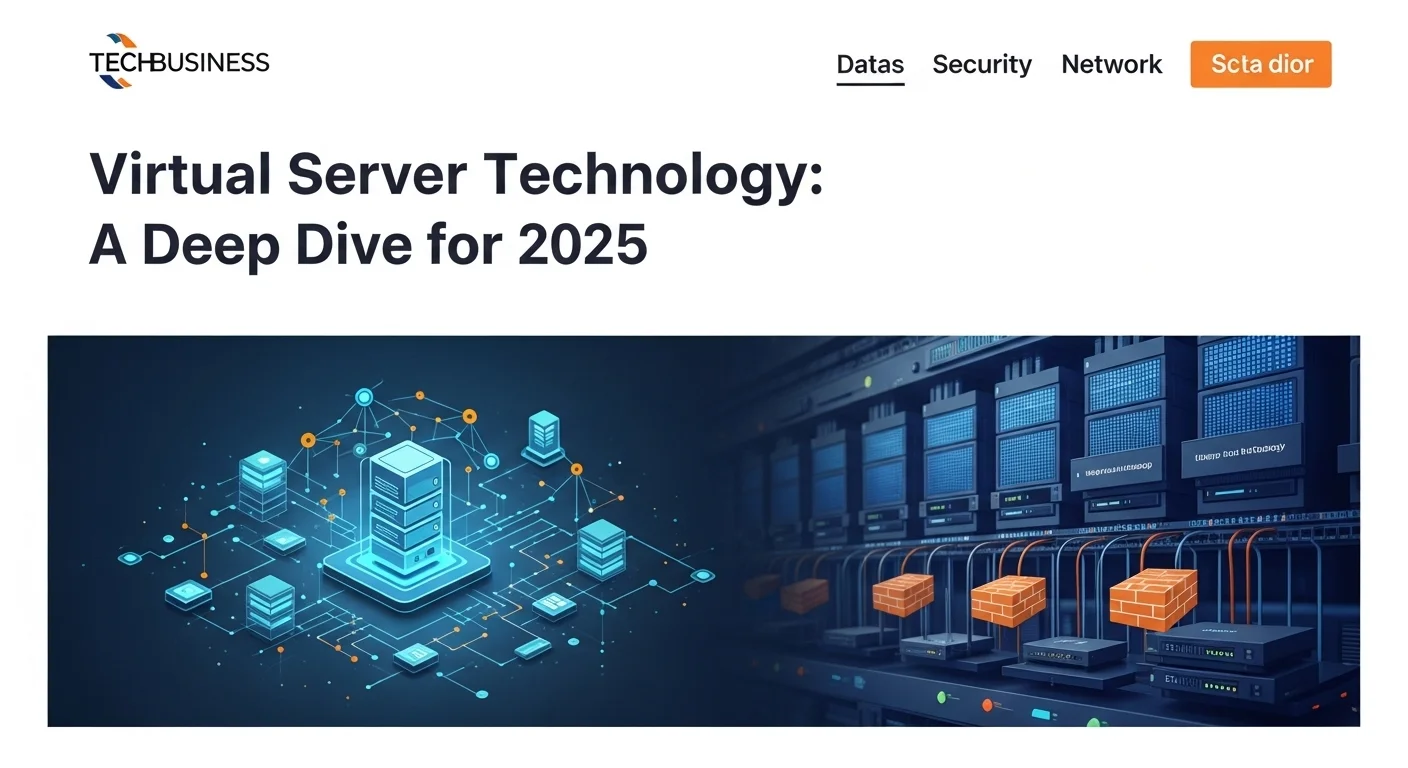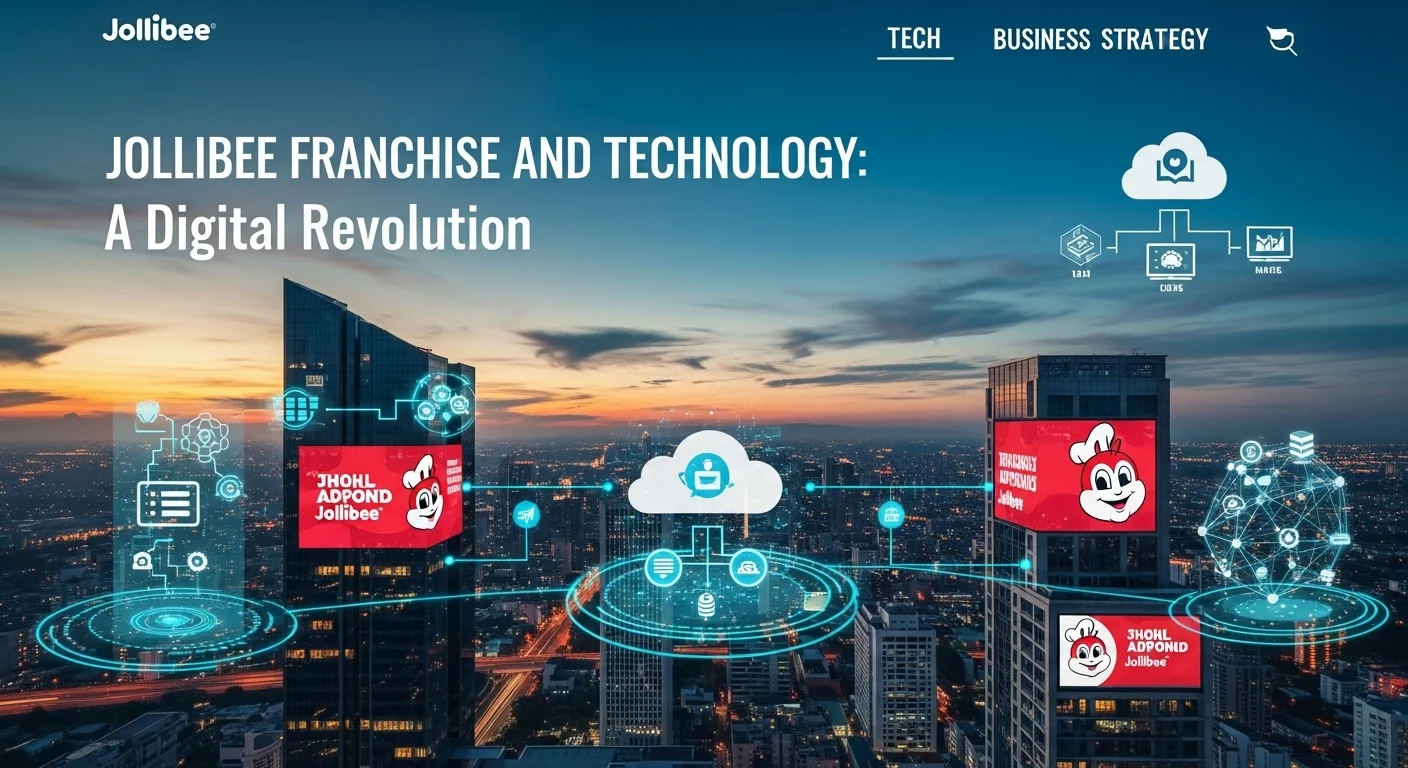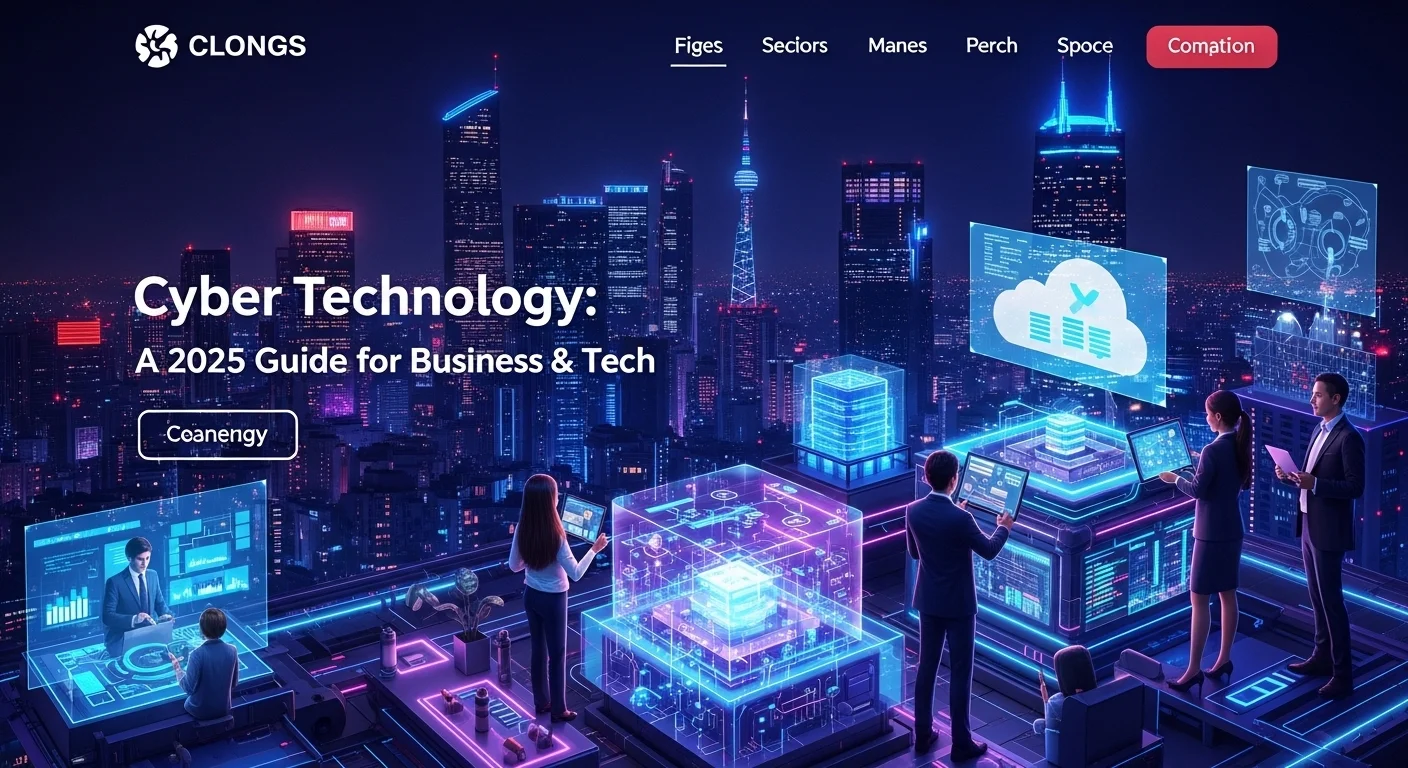Virtual Server Technology: A Deep Dive for 2025

Executive Summary
In the landscape of modern technology, the virtual server stands as a cornerstone of efficiency and scalability. This article provides a comprehensive exploration of virtual server technology, from its fundamental concepts to its advanced applications in the business world. We delve into how server virtualization works, partitioning a single physical server into multiple isolated virtual environments, each capable of running its own operating system and applications. [1, 2] This innovation drives significant cost savings, enhances disaster recovery capabilities, and offers unparalleled flexibility for businesses of all sizes. [13, 19] We will examine the offerings of major cloud providers, specifically the aws virtual server (Amazon EC2) and the google virtual server (Google Compute Engine), comparing their features, pricing, and ideal use cases. [17, 22] Furthermore, the article covers the broader context of virtual server in cloud computing, explaining how server virtualization in cloud computing and cloud server virtualization in cloud computing have become the bedrock of today's digital infrastructure. Whether you are a business owner, an IT professional, or a tech enthusiast, this guide will equip you with the knowledge to understand, implement, and optimize virtual server solutions for a competitive edge.
Table of Contents
What is a Virtual Server and why is it important in Technology?
In the ever-evolving world of information technology, few concepts have been as transformative as virtualization. At the heart of this revolution lies the virtual server, a software-based emulation of a physical server. [4] It is a foundational technology that has reshaped data centers, powered the cloud computing boom, and provided businesses with unprecedented levels of flexibility and efficiency. To truly grasp its significance, one must first understand what it is, how it works, and the profound impact it has on the digital landscape. A virtual server is essentially a server that shares hardware and software resources with other operating systems, as opposed to a dedicated physical server. [19] Through a process called server virtualization, a single, powerful physical server can be partitioned into multiple, isolated virtual environments. [1, 7] Each of these environments, or virtual servers, functions as a self-contained server with its own operating system (OS), applications, and allocated resources like CPU, memory, and storage. [3] This entire process is managed by a specialized software layer known as a hypervisor. [11] The hypervisor sits between the physical hardware and the virtual servers, abstracting the machine's resources and distributing them among the various virtual instances. [4] This allows, for example, a single physical machine to simultaneously run a Linux-based web server, a Windows-based database server, and another server for testing and development, all in complete isolation from one another. [3] The importance of this technology cannot be overstated. Before virtualization became widespread, the standard model was 'one server, one application.' [13] This meant that for every new application or service a business needed, a new physical server had to be purchased, installed, powered, and maintained. This led to massive server sprawl, with data centers full of underutilized machines consuming vast amounts of power and space. [9] Many servers would often run at only 5-15% of their total capacity, representing a significant waste of capital and operational expenditure. Virtualization shattered this inefficient paradigm. By allowing multiple virtual servers to run on a single piece of hardware, organizations could dramatically increase their resource utilization, often achieving 80% utilization or more. This consolidation leads to direct and substantial benefits. The most immediate advantage is cost reduction. Fewer physical servers mean lower hardware acquisition costs, reduced power and cooling expenses, and a smaller data center footprint. [21] Beyond cost, virtual servers offer immense operational flexibility and speed. Deploying a new physical server can take days or even weeks, involving procurement, racking, and installation. In contrast, a new virtual server can be provisioned and deployed in a matter of minutes. [13] This agility is crucial in today's fast-paced business environment, where the ability to quickly scale resources up or down in response to demand is a key competitive advantage. This scalability is a core tenet of what makes the virtual server in cloud computing so powerful. The rise of cloud giants like Amazon Web Services (AWS) and Google Cloud is intrinsically linked to the power of virtualization. These providers operate massive data centers filled with physical servers, and they use virtualization to carve out and rent virtual servers to customers on demand. The aws virtual server offering, known as Amazon Elastic Compute Cloud (EC2), is a prime example. [17] EC2 allows users to rent virtual computers, which Amazon calls 'instances', to run their own applications. [27] Similarly, the google virtual server, part of its Compute Engine service, provides scalable, high-performance virtual machines running in Google's data centers. [22] Both platforms exemplify the power of server virtualization in cloud computing, offering a vast array of instance types tailored for different workloads, from small web servers to powerful machines for AI and data analytics. Another critical aspect of virtual server technology is its role in disaster recovery and business continuity. [4] Backing up and restoring a physical server can be a complex and time-consuming process. With virtual servers, the entire instance—including the OS, applications, patches, and data—is encapsulated in a set of files. These files can be easily backed up, copied, and moved. In the event of a hardware failure, a virtual server can be rapidly restarted on another physical host, often with minimal to no downtime, a process known as live migration. [1] This capability dramatically improves resilience and reduces the business impact of unforeseen outages. The concept of cloud server virtualization in cloud computing extends beyond just creating virtual machines. It is the fundamental technology that enables the entire 'as-a-service' model, including Infrastructure as a Service (IaaS), Platform as a Service (PaaS), and Software as a Service (SaaS). [4] IaaS providers, like AWS and Google, give you the raw virtual server building blocks. PaaS providers build on top of that, offering a platform with pre-configured operating systems and development tools, abstracting away the underlying server management. SaaS providers go a step further, delivering a complete software application over the internet, running on a complex infrastructure of virtual servers that is entirely invisible to the end-user. Furthermore, the isolation provided by virtual servers enhances security in certain respects. If a security breach or malware affects one virtual server, it is contained within that isolated environment and cannot easily spread to other virtual servers on the same physical host. [3] This allows for the creation of sandboxed environments for testing potentially risky software or for hosting applications with different security requirements on the same hardware. [4] In summary, the virtual server is a cornerstone of modern technology for several key reasons. It dramatically improves hardware utilization, leading to significant cost savings and a greener environmental footprint. [7] It provides the agility and scalability necessary for modern businesses to adapt and grow. It enhances disaster recovery capabilities, ensuring business continuity. It is the foundational engine of the entire cloud computing industry, with services like the aws virtual server and google virtual server making immense computing power accessible to everyone. The principles of server virtualization in cloud computing and cloud server virtualization in cloud computing are not just technical details; they are the enablers of digital transformation, allowing organizations to innovate faster, operate more efficiently, and build more resilient systems in an increasingly digital world.

Complete guide to Virtual Server in Technology and Business Solutions
Understanding the 'what' and 'why' of virtual servers is the first step. The next is to master the 'how'—how to choose, implement, and manage this technology to drive business solutions. This guide delves into the technical methods, business strategies, and comparative analysis required to effectively leverage virtual servers, with a specific focus on market-leading platforms. At the core of any virtual server deployment is the hypervisor. There are two main types. Type 1, or 'bare-metal' hypervisors, run directly on the host's hardware to control the hardware and to manage guest operating systems. Examples include VMware vSphere/ESXi, Microsoft Hyper-V, and the open-source KVM (Kernel-based Virtual Machine). [3] These are the standard for enterprise data centers and cloud providers due to their efficiency and performance. Type 2, or 'hosted' hypervisors, run on a conventional operating system just like other computer programs. Examples include VMware Workstation and Oracle VirtualBox. These are typically used for desktop and development purposes, not for production server environments. When discussing virtual server in cloud computing, we are almost exclusively dealing with Type 1 hypervisors. Cloud providers like AWS and Google have built their global infrastructure on highly customized versions of these technologies. The aws virtual server platform, EC2, is built on a KVM-based hypervisor, heavily modified for security and performance. The google virtual server platform, Compute Engine, also leverages KVM. This common foundation highlights KVM's robustness and flexibility in large-scale deployments. A crucial technical distinction to understand is the difference between virtualization and containerization. While both involve running multiple isolated workloads on a single host, their approach differs significantly. Server virtualization in cloud computing involves virtualizing the hardware, meaning each virtual server (or VM) has its own complete guest operating system. [14] Containerization, exemplified by Docker, virtualizes the operating system itself. Containers share the host OS kernel and only package the application and its dependencies. [36] This makes containers much more lightweight and faster to start than VMs. However, VMs provide stronger isolation and can run different operating systems on the same host, whereas all containers on a host must be compatible with the host OS kernel. [35] Often, these technologies are used together; for instance, a company might run a Docker container engine inside a google virtual server instance to combine the scalability of the cloud with the portability of containers. When a business decides to adopt virtual servers, the primary choice is often between building an on-premises virtualized environment or using a cloud provider. For most modern businesses, especially small to medium-sized ones, the cloud is the more compelling option due to the elimination of upfront capital expenditure and the pay-as-you-go model. [23] This brings us to a direct comparison of the two giants: aws virtual server (EC2) and google virtual server (Compute Engine).
- Instance Types and Families: Both providers offer a dizzying array of virtual server configurations optimized for different tasks. AWS has instance families for General Purpose (T and M series), Compute Optimized (C series), Memory Optimized (R and X series), Storage Optimized (I and D series), and Accelerated Computing (P, G, Inf series) for GPUs and machine learning. [31] Google Cloud offers a similar structure with its E2, N2, C3 (Compute-Optimized), M3 (Memory-Optimized), and A2/G2 (Accelerator-Optimized) machine families. [43] A key differentiator for Google is its Custom Machine Types, which allow users to create VMs with a specific amount of vCPU and memory, offering granular control to minimize waste. [22]
- Pricing Models: Both platforms offer similar pricing structures. On-Demand pricing allows you to pay for compute capacity by the hour or second with no long-term commitment. [27] Reserved Instances (AWS) or Committed Use Discounts (Google) provide significant discounts (up to 70%+) in exchange for a one- or three-year commitment. Spot Instances (AWS) and Spot VMs (Google) offer the largest discounts (up to 90%) on spare compute capacity, but with the caveat that the provider can reclaim the instance with little notice, making them suitable for fault-tolerant workloads. [27, 22]
- Storage: The primary block storage for an aws virtual server is Amazon Elastic Block Store (EBS), which functions like a virtual hard drive that can be attached to an EC2 instance. [30] Google's equivalent is Persistent Disk. [41] Both offer various performance tiers (from standard HDDs to high-performance IOPS-provisioned SSDs) and capabilities like snapshots for backups.
- Networking and Security: Both providers have robust, software-defined networking capabilities. AWS uses Virtual Private Cloud (VPC) to create logically isolated sections of the cloud, with Security Groups acting as a virtual firewall for instances. [17] Google Cloud uses a similar VPC concept, but its VPCs are global by default, which can simplify multi-region deployments. Firewall rules in Google Cloud serve the same purpose as Security Groups.

Tips and strategies for Virtual Server to improve your Technology experience
Deploying virtual servers is just the beginning of the journey. To truly harness their power and improve your technology experience, you must adopt a strategic approach to management, security, and optimization. This involves implementing best practices, leveraging the right tools, and continuously refining your strategy to align with business goals. Here are essential tips and strategies for getting the most out of your virtual server environment.
1. Embrace Automation and Infrastructure as Code (IaC)
Manual configuration of servers is slow, error-prone, and doesn't scale. The modern approach is Infrastructure as Code (IaC), where you manage and provision your infrastructure using configuration files. Tools like Terraform, Ansible, Chef, and Puppet allow you to define your entire environment—from the specifications of your google virtual server instances to your networking rules and load balancers—in code. This has several advantages:- Consistency: IaC ensures that every environment, from development to production, is identical, eliminating the 'it works on my machine' problem.
- Speed and Efficiency: You can spin up or tear down entire complex environments in minutes, dramatically accelerating development and testing cycles.
- Version Control: Your infrastructure code can be stored in a Git repository, just like application code. This provides a full history of changes, enables peer review, and allows for easy rollbacks if an issue occurs.
2. Implement Proactive Monitoring and Alerting
You cannot manage what you cannot measure. Comprehensive monitoring is non-negotiable for any serious virtual server deployment. [32] You need to track key performance indicators (KPIs) for your virtual servers, including CPU utilization, memory consumption, disk I/O, and network traffic. [33] Both AWS and Google provide robust native monitoring solutions. The aws virtual server ecosystem is monitored by Amazon CloudWatch, which collects logs, metrics, and events. [17] The google virtual server environment uses Google Cloud's operations suite (formerly Stackdriver) for logging, monitoring, and tracing. [5] While these native tools are powerful, many organizations also use third-party platforms like Datadog, New Relic, or Dynatrace for a single-pane-of-glass view across multi-cloud or hybrid environments. The key is to move from reactive to proactive monitoring. Don't just wait for a server to fail. Set up intelligent alerts that notify you of potential issues *before* they impact users, such as a disk filling up or sustained high CPU usage. [32]3. Harden Your Security Posture
A virtual environment introduces unique security considerations. [10] Best practices are essential to protect your assets:- Principle of Least Privilege: Use Identity and Access Management (IAM) tools from your cloud provider to grant users and services only the permissions they absolutely need to perform their tasks. Avoid using root or administrator accounts for routine operations.
- Network Security: Leverage virtual firewalls like AWS Security Groups or Google Cloud Firewall Rules to tightly control inbound and outbound traffic to your instances. [33] By default, deny all traffic and only open the specific ports required for your application to function. Use network segmentation with VPCs and subnets to isolate different parts of your application. [10]
- Patch Management: Regularly update your guest operating systems and application software with the latest security patches. [33] Many vulnerabilities are exploited because of unpatched systems. Automation tools can help streamline this process.
- Data Encryption: Encrypt sensitive data both at rest (on your virtual disks like EBS or Persistent Disk) and in transit (using protocols like TLS/SSL). [10] Cloud providers make this relatively easy to implement.
- Secure the Hypervisor (On-Premises): If you are managing your own virtualization infrastructure, securing the hypervisor itself is paramount. A compromised hypervisor means all guest VMs are compromised. [34] This is a key reason many businesses prefer the shared responsibility model of the cloud, where the provider secures the underlying infrastructure.
4. Optimize for Cost and Performance
The flexibility of the virtual server in cloud computing can be a double-edged sword; without careful management, costs can spiral. Regularly review your resource allocation. [8] Are your virtual servers 'right-sized'? It's common to overprovision resources 'just in case'. [5] Use monitoring tools to identify idle or underutilized instances and resize them to a more appropriate (and cheaper) type. Utilize cost-saving plans like AWS Reserved Instances or Google Committed Use Discounts for predictable, long-running workloads. [27, 22] For workloads that are fault-tolerant and not time-critical, leverage Spot Instances/VMs to achieve massive savings. [27] A core strategy for both cost and performance optimization is auto-scaling. Configure auto-scaling groups for your applications. This allows the platform to automatically add more virtual servers when traffic is high and remove them when traffic subsides. [27] This ensures you have the performance you need during peak times while only paying for what you use during quiet periods. This dynamic scaling is a prime benefit of server virtualization in cloud computing.5. Master Backup and Disaster Recovery
Virtualization simplifies backups, but you still need a robust strategy. [8] Regularly take snapshots of your virtual disks. These snapshots can be used to quickly restore a server or create clones. Automate this process to ensure it happens consistently. For true disaster recovery, replicate your backups and critical virtual server images to a different geographic region. [19] In the event of a region-wide outage, you can bring your infrastructure online in the failover region. Test your disaster recovery plan regularly. A plan that has never been tested is not a plan; it's a theory. The ease of recovery is a major selling point of cloud server virtualization in cloud computing. By implementing these tips and strategies, you can transform your use of virtual servers from a simple infrastructure choice into a strategic business advantage. Whether using an aws virtual server, a google virtual server, or a hybrid solution, a proactive, automated, and secure approach will maximize your return on investment and provide a superior technology experience. For further reading on advanced security protocols in virtual environments, the NIST Special Publication 800-125 provides an excellent, in-depth technical resource. [34]Expert Reviews & Testimonials
Sarah Johnson, Business Owner ⭐⭐⭐
The information about Virtual Server is correct but I think they could add more practical examples for business owners like us.
Mike Chen, IT Consultant ⭐⭐⭐⭐
Useful article about Virtual Server. It helped me better understand the topic, although some concepts could be explained more simply.
Emma Davis, Tech Expert ⭐⭐⭐⭐⭐
Excellent article! Very comprehensive on Virtual Server. It helped me a lot for my specialization and I understood everything perfectly.



